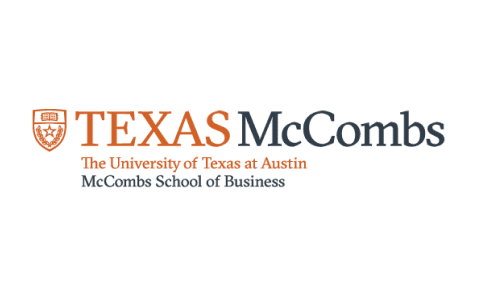Python for Machine Learning in Hindi
Learn the basics of Machine Learning with algorithms designed in Python
Instructor:
Mr. Bharani Akella
Ratings
Level
Learning hours

Learners
Skills you’ll Learn
About this course
We know that python is known to be a high-level programming language. It is also an open-source programming language that is interpreted, and object-oriented. And when we speak about Machine Learning, this is used for identifying the patterns in data. Machine learning algorithms are answerable for sorting, cleaning, and searching from the data or algorithms. Python is known for its rich technology stack, which has an extensive set of libraries for Artificial Intelligence and Machine Learning. Python for machine learning is used since python offers concise and readable code. This course involves learning python for machine learning in Hindi starting from the basics of machine learning and installing libraries which include NumPy, Pandas, and Matplotlib. Going ahead, regression techniques and decision trees will be discussed, which is helpful when it comes to machine learning.
Great learning offers multiple post-graduate programs which are under the fields of machine learning and artificial intelligence. Join Great Learning’s Artificial Intelligence Courses and learn all the key skills required to build a career in Artificial Intelligence. Great Learning focuses on ensuring that you learn the basic and in-depth concepts well. We aim to empower our learners and help them build a career in Artificial Intelligence and Machine Learning.
Check out our PG Course in Machine learning Today.
Course Outline
In this module, we will discuss about the machine learning basics in detail.
 UPGRADE
UPGRADE
Recommended university programs
Our course instructor

Mr. Bharani Akella
Data Scientist
Frequently Asked Questions
Will I receive a certificate upon completing this free course?
Is this course free?
Where can I learn Python For Machine Learning in Hindi?
There are many sites that offer free courses or even books where we can learn python for machine learning in Hindi. A brief ML Course in Hindi is provided by Great Learning. It is easier to understand ML in Hindi.
What is the use of python for machine learning?
The benefits or the uses of python for machine learning are simplicity and consistency. Which gives access to great libraries and the frameworks of ML. and also its flexibility, platform-independent. It is easier to develop machine learning algorithms in python, so we can easily develop any programs.
What are the Advantages of Python For Machine Learning?
Some of the advantages of python for machine learning courses are it is independent across the platforms, consistent and simple, their frameworks and vast libraries they possess, they also can run on multiple platforms.
Python For Machine Learning in Hindi
Machine learning is the field of artificial intelligence, which provides computers with the ability to learn without being explicitly programmed, machine learning also focuses on the development of computer programs that can also be changed when exposed to new data. Python has developed so many modules to help programmers in implementing machine learning. Machine learning usually involves the computer to be trained by using the given data sets and then use these trained data sets to predict the properties of the given data.
The process of training and prediction of given data involves specialized algorithms. We feed this training data to an algorithm and this algorithm uses the training data for giving predictions on a new data set. One of the algorithms for classification which can be used is the k nearest neighbour algorithm there are many other algorithms and libraries of python used in machine learning. As we said that machine learning is the field of artificial intelligence which consists of algorithms that improve performance and executing some task over time with the experience.
Today it is one of the most popular programming languages for the task and this has replaced many languages and the reason behind this is its vast collection of libraries.
What is Machine Learning?
Let us see the definition of machine learning (for ML meaning in Hindi, checkout the ML course above) first which was given by professor Mitchell it is like “a computer program is said to learn from the experiences E with respect to tasks and a performance measure P, and if this performance as the tasks in T, as measured by P, improves with experience E.
Some of the examples where machine learning is used are error detection and prevention, speech recognition, fraud recognition, the recommendation of products in online shopping etc. This also analyses the data and learns to predict the output.
What is Python?
Python is an object-oriented language that has capabilities of high-level programming language, which has easy syntax and portability makes it popular. It is an open-source programming language and also has features of both java and c. It is interpreted language and can be installed in any operating system like Linux, windows etc.
Python also has an extensive powerful set of packages that can be used in various domains. Packages like NumPy, Scipy, pandas, scikit-learn etc., are used for machine learning.
Components of Python Machine Learning Ecosystem.
Components make python an important language for machine learning. There are many components like this one of them is
- Jupyter notebook
Jupyter basically provides an interactive computational environment for developing an application, they are known as ipython notebooks. This need not to be installed separately we can directly get it when we install the anaconda navigator. This can be just opened using - c:\ > jupyter notebook. This notebook includes three types of cells, i.e.,
- Code cells
Code cells are used for writing the code and then it is sent to the kernel.
- Markdown cells
Markdown cells are used for notating the computation process, these may contain text, images, HTML tags, equations etc.
- Row cells
The text which is written is displayed as it is. They are also used for adding the text.
- NumPy
This is also one of the components which makes python one of the favourite languages for machine learning, data sciences etc. NumPy stands for numerically python and also consists of multi-dimensional array objects. This component can perform mathematical and logical operations on arrays, Fourier transformation and also operations association with linear algebra. Even this is also present in the anaconda navigator. We just need to import this using the command – install numpy as np.
- Pandas
This is one of the libraries which is used in data manipulation, wrangling and analysis in machine learning. This was developed by Wes Mckinney in 2008. By using pandas, we can accomplish the following steps i.e., load, prepare, manipulate, model, analyze the data. In pandas, the entire data is represented in three different data structures which are series, data frames and panels. This is imported using the following command - import pandas as pd.
- Scipy
This is the popular library among machine learning libraries as this library contains different modules of optimization, linear algebra, integration and statistics. Scipy is one of the core packages that is also very useful in image manipulation.
- Matplotlib
This library is used for data visualization like pandas even though this is not directly related to machine learning this comes in handy when a programmer wants to visualize the pattern data. This is a 2D plotting library used for creating 2D graphs and plots. This provides various kinds of graphs and plots for data visualization, viz, histogram, error charts, bar charts etc.
- Scikit learn
This is the open-source python library that implements a range of machine learning for pre-processing, cross-validations and visualization algorithms using a unified interface. This is built on top of pandas, numpy, scipy.
Some other libraries in python include Theano, tensor flow, keras, pytorch.
Data Preprocessing For Machine Learning in Python.
Preprocessing is the transformations that are applied to the data before feeding to the algorithm, whereas data preprocessing is the technique that can be used for converting the raw data into clean data sets i.e., when the data gathered is collected from various resources, this data is collected in raw format which is not suitable for analysis. For achieving better results, the data has to be in a specified format and then the data set should be formatted so that more than one machine learning algorithms are executed in one data set and the best is chosen out of them.
There are different techniques that are
- Rescale data
- Binarize data
- Standardize data, these techniques are used for data preprocessing.
Different Types Of Methods in Machine Learning.
Machine learning is classified into different types mainly
- Supervised learning.
supervised data is labelled data. These are the most commonly used machine learning algorithms. This learning algorithm takes the data sample i.e., the training data and its associated output with each and every data samples during training, and its main objective is easy to learn the association between the input data samples and corresponding outputs after performing multiple training data instances. This is called supervised because the whole process can be thought of by a supervised teacher or supervisor. Examples of supervised machine learning algorithms include decision trees, random forest, KNN, logistic regression etc.
- Supervised learning is broadly classified into two classes
- Classification
The key objective of classification-based tasks is predicting categorized output labels or the responses for the given input data, the output is based on what the model has learned in the training phase.
- Regression
The key objective of regression tasks is to predict output responses which are continuous numeric values, for the given input data, then the output is based on what the model has learnt in the training phase. Usually, regression models use independent variables corresponding to dependent variables to learn the association between inputs and outputs.
- Unsupervised learning.
Unsupervised data is the unlabelled data, which is opposite to the supervised machine learning algorithms which means that in these methods, we don’t have any supervisor or teacher for guiding. These are handy in the scenario. Examples of unsupervised machine learning include k-means, k-nearest neighbours etc.
Based on the tasks, unsupervised algorithms are divided into
- Clustering
- Association
- Dimensionality reduction
- Anomaly detection
Clustering is used for finding similarities as well as relationship patterns among data samples and then cluster these samples into groups based on similarity features. Whereas, the association is used to analyse a large dataset for finding the patterns which further represents interesting relationships between different items. This is also known as association rule mining or market basis analysis.
- Semi-supervised learning.
This learning is neither fully supervised or unsupervised, they fall between the two learning methods. These learning algorithms generally use a small supervised learning component of data i.e., the unlabelled data for training.
- Reinforcement learning.
These methods are different from all the above methods, and these methods are rarely used. In this kind, there is an agent where we should train over a period of time so that it can interact with a specific environment. The agent follows a set of strategies for interaction with the environment agent that takes actions regarding the current environment. These algorithms are said to be the future of machine learning since they eliminate the cost of collecting and cleaning the data.
Advantages
- Python has extensive support of libraries like NumPy for numerical calculations and pandas for data analytics. It has an open-source framework and community development. Since python became quite popular, these libraries and the frameworks are very much useful because they save so much time.
- Easy to learn and easy to use. Since it is simple with a very easily readable syntax which makes it loved by both the students and developers.
- It is a User-friendly, Object-oriented, and high-level programming language and Dynamically typed language.
- Python is portable and extensible, this is a very important reason why python in machine learning is popular since it performs a lot more operations.
Applications
- GUI based desktop application like gaming.
- Web frameworks applications.
- Language development.
- Prototyping.

































